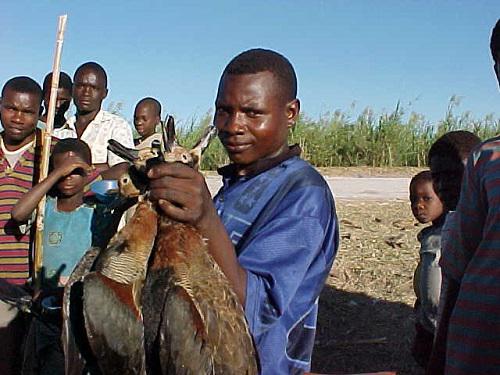Stella Sofasi
Other projects
7 Jul 2009
Research and Eradication Programme of Invasive Alien Plants (IAP) Causing Massive Loss of Indigenous Biodiversity in Nyika National Park
This project aims at protecting and restoring the integrity of the entire ecosystem and its threatened bird species through community participatory approach.

Over-exploitation of waterfowl at Lake Chilwa.
Lake Chilwa wetland ecosystem is a Ramsar site. It is, thus, a site of international importance. However, it is neither a wildlife reserve nor a protected area. Most of the area is under customary land tenure and, thus, under an open access regime. Population pressure in the area is high with 916,447 people living in the catchment and an estimated 77,000 people in the wetland itself. Population density in the catchment is 164 persons per sq. km.
The majority of the population depend directly on the wetland resources for livelihood and as a result, the entire ecosystem is under adverse environmental degradation. Wetland resources are being unsustainably harvested; land cleared for irrigation agriculture and settlement; and there are incidences of bush fires, livestock overgrazing and deforestation (Malawi Government, 2002). The ecosystem has been reduced from 5,669 sq. km to 1, 750 sq. km and hence many Palearctic and intra-African migrant water birds, and other animals that live and breed in the ecosystem are threatened of extinction and some have already become extinct. According to Wilson (2003), the number of bird species in the ecosystem has declined too from 164 to 108 species and this poses a great threat to the integrity of the ecosystem and to the survival of the birds and other animals.